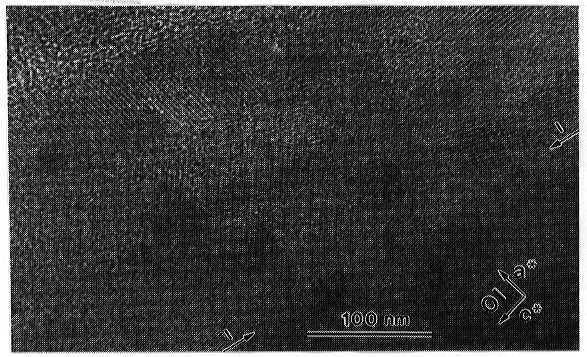

Analytical transmission electron microscopy (ATEM) can be used to measure quantitative compositional profiles in minerals on a sub-µm scale. This technique allows investigation of low-temperature diffusion processes and short duration diffusion events, which have not been possible to study previously because of experimental and analytical difficulties.
In this study we used ATEM to measure compositional profiles produced
during Fe-Mg interdiffusion experiments in olivine under controlled fO2
conditions. The accuracy of the measurements
can be tested by comparing compositional profiles measured by both ATEM
and EMPA (for profile lengths where both methods are applicable) as well
as by retrieving diffusion coefficients from both TEM and EMPA data. For
example, we determined the Fe-Mg diffusion coefficient from profiles measured
on a sample which was annealed for only 24 minutes (as opposed to a typical
anneal time of ~250 hours) and found it to be identical, within error,
to those obtained from longer anneals. This implies that point defects
equilibrate extremely rapidly in the interfacial region and thus that it
should be possible to conduct shorter annealing experiments at high pressures,
which have not been done previously. For diffusion anneals below 900°C,
conventional single crystal diffusion couples are found to be unsuitable
because of weak bonding of the interface, which makes sample preparation
difficult. Therefore, we developed a new technique
employing a thin film of fayalite attached by a vapor deposition process
onto a substrate of San Carlos olivine. Analysis of the thin film
shows a Fe/Si ratio of 2:1. From electron diffraction as well as HRTEM
it can be seen that the film is partly crystalline, with randomly oriented
domains up to 250 nm in size showing lattice fringes (Fig. 3.4-3). This
film makes an ideal diffusion couple because the substrate can be cooled
during the PVD process, precluding the induction of an initial diffusion
profile prior to the diffusion anneal. Diffusion anneals have been carried
out using these thin film diffusion couples and the resulting interface
regions were successfully prepared for TEM analysis. This demonstrates
the potential of using such thin-film diffusion couples in combination
with ATEM for obtaining low temperature diffusion data. A preliminary determination
of the diffusion coefficient from a couple annealed at 800°C is consistent
with extrapolation of high temperature data, which suggests there is no
change in diffusion mechanism for olivine between 800-1300°C.
 |
|

Tel: +49-(0) 921 55 3700 / 3766, Fax: +49-(0) 921 55 3769, E-mail: bayerisches.geoinstitut(at)uni-bayreuth.de
 Previous page
Previous page